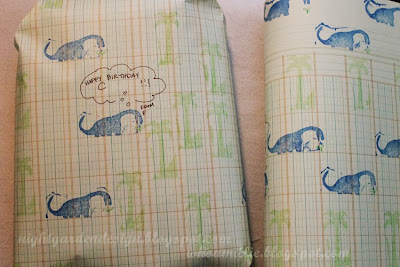Hershey bar solar array! Rice cake water cistern!
A trio from the family competition.
Nice piping on this one, from the dangling icicles to the trees and wreaths.
Fully iced lighthouse, complete with a photo of the inspiration structure.
Another lighthouse with gingerbread tourists and marine life.
There's even a gingerbread boy buried in the sugar sand in the lower right hand corner.
Graham crackers with licorice roof.
Love this gingerbread multi-story building with sugar glass shards on the roof and the dyed coconut/gumdrop flower/cookie stepping stone landscaping.
And to contrast it, a traditional village of tiny houses.
Despite missing the competition, I did sit down with my kiddo to decorate a gingerbread house of our own. We used a kit from Wilton so we could get right to the fun part (bonus: some stores start putting their Christmas items on clearance right before the holiday; we picked up this kit for $5).
If we do one of these next year, I'll try to remember that there are two colors of icing included, but only one decorating bag. We ended up with an interesting combination of "snow" and "grass", kinda like after the snow from that storm started to melt a few weeks back.
So, did your family get in on the gingerbread fun this year? Anyone have a preschooler who actually uses more candy to decorate than to eat? Tell me all about it.
Thanks for reading!

















































